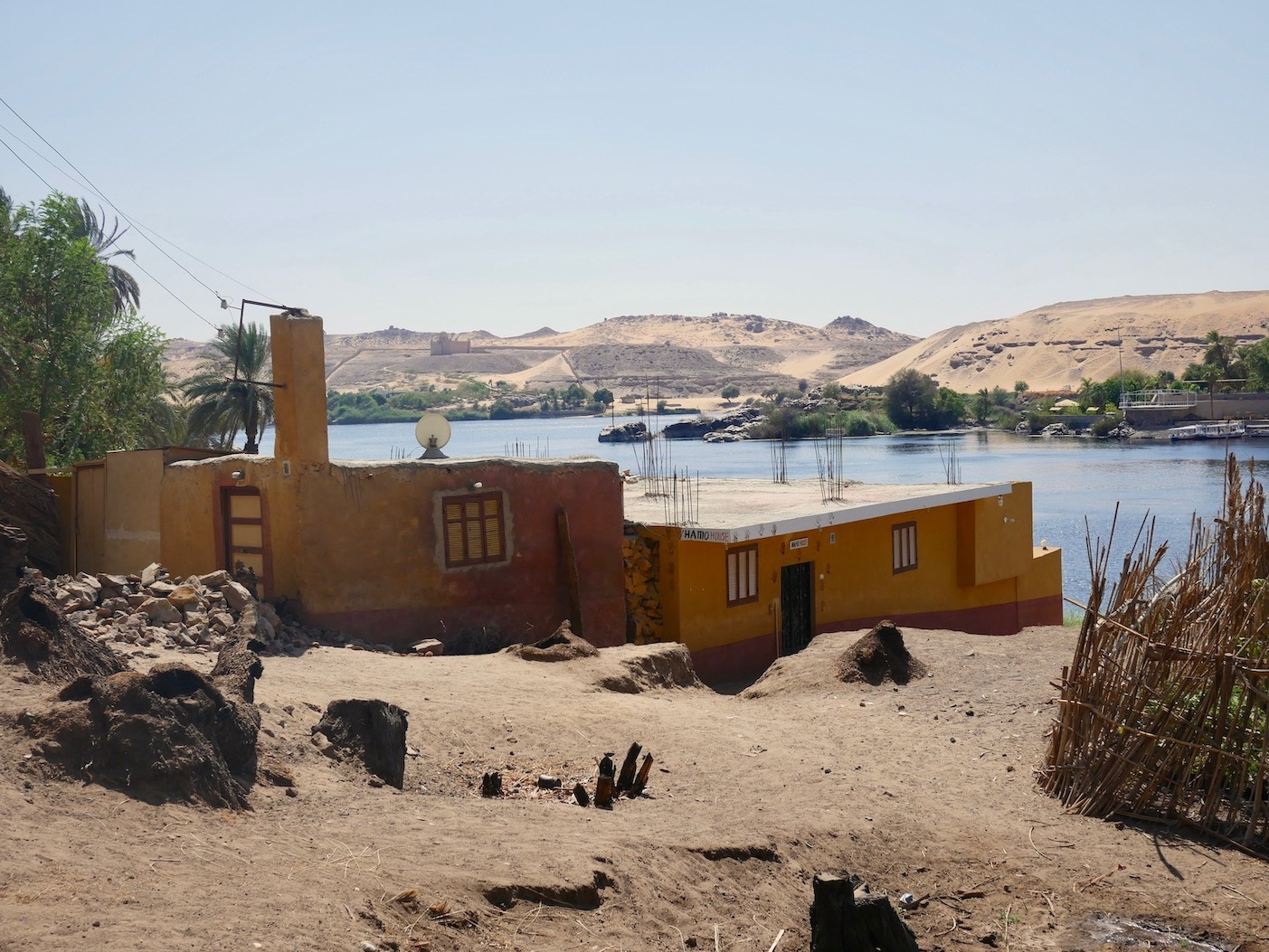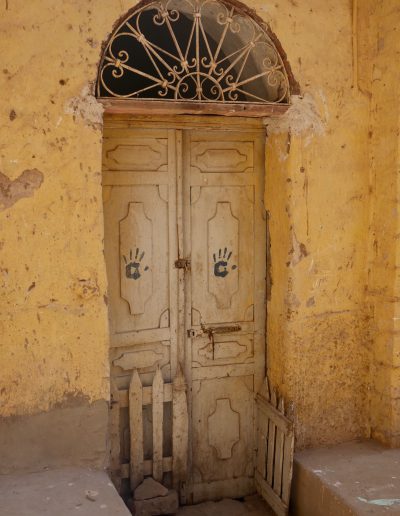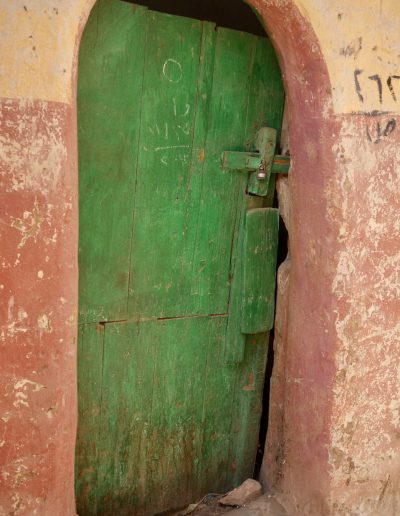NUBIAN WEDDING
Lake Nasser divided Nubia into two parts. One hundred and twenty thousand people were resettled. Pagan ceremonies and the worship of river spirits take on new forms at the concrete estates built by the state.
We cannot learn much about Nubia and its inhabitants from literature. In the late 1890’s, at the height of the colonial era, European researchers, sitting in their cabinets and writing about the fascinating practices of “primitive peoples”, did not have much material from Nubia to analyze – fortunately, because there is no doubt that more data would only result in an even stronger belief of their readers in the evolutionary superiority of their own culture. Merchants, travelers and English soldiers stationed in Egypt – the main sources of information about Nubia – only sporadically visited the country.
read & listen
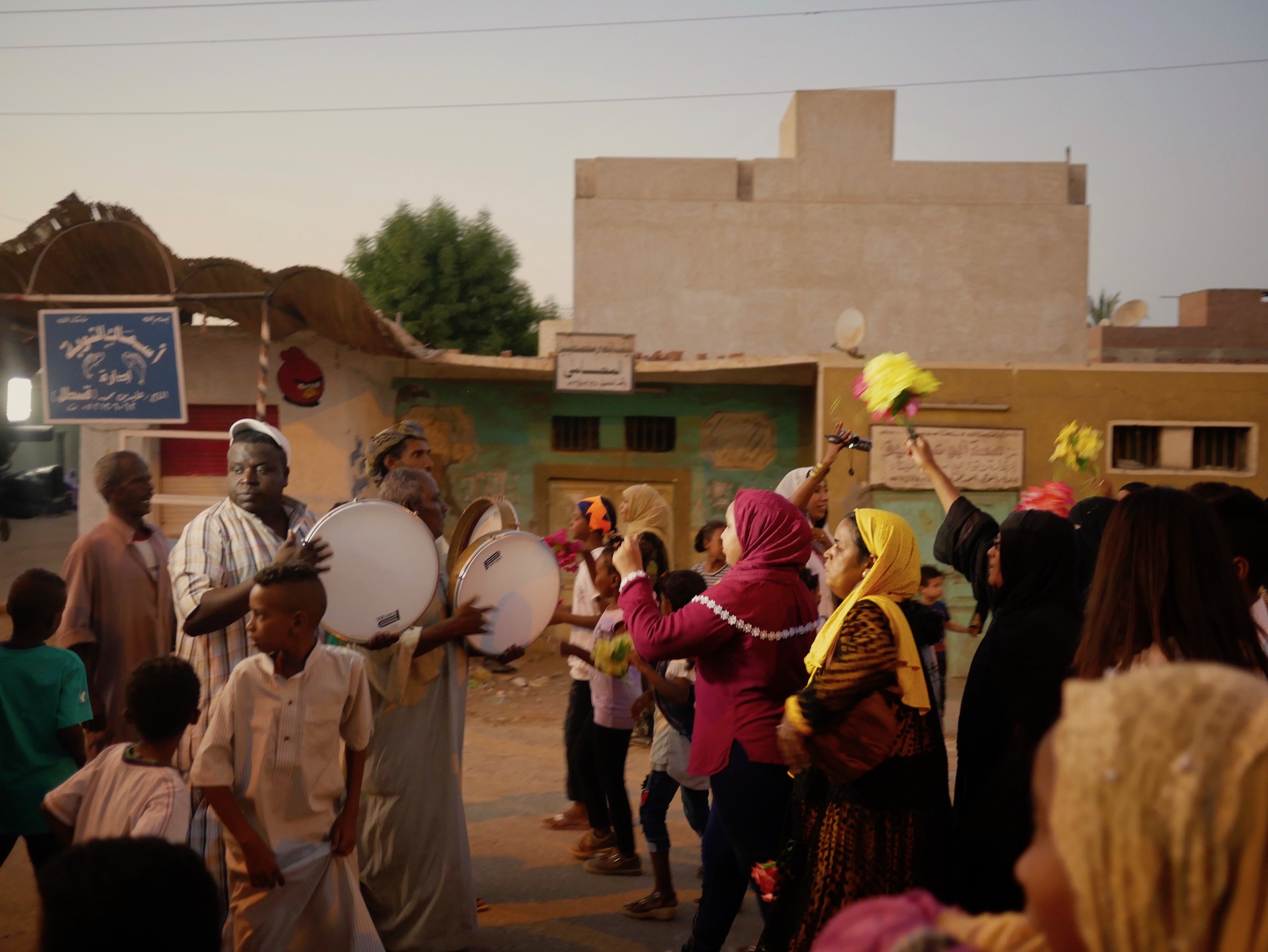
In the mid-twentieth century a significant number of archeologists began to come to Nubia to conduct their research. The construction of the Aswan Dam involved the creation of a large artificial reservoir – Lake Nasser. As a result, the treasures of several ancient civilizations were to be drowned under the water of the lake. The last stage of the dam construction was completed in the early 1970’s. An international group of workers, engineers and archaeologists was engaged in the project of saving the temple of Isis – which could be washed away by the artificial damming of the waters – and moving it to the new place. The temple complex in the form of 40,000 blocks was transported from the flooded island of Philae and – under the watchful eye of UNESCO – re-constructed on the island of Agilika, situated slightly higher.
The construction of the dam was of strategic significance for Egypt, and involved the complete resettlement of several Nubian tribes that had been living in the Nile Valley between Aswan and the area of Wādī Ḥalfā in Sudan for thousands of years. In total, over 120,000 Nubians were resettled from the flooded areas. More than half of them used to live on the Egyptian side of the border: on the west bank of the river in Aswan and around the town of Kom Ombo, about 50 kilometers north. Establishing a completely new settlement for such a poorly understood community posed many troubles for the administration. There was a need for extensive studies of Nubian customs and beliefs, which began in 1961 under the auspices of the American University of Cairo. The tribes of Kunuz, Fadikka and Wadi al-Arab were for the first time the focus of Egyptian and foreign ethnography.
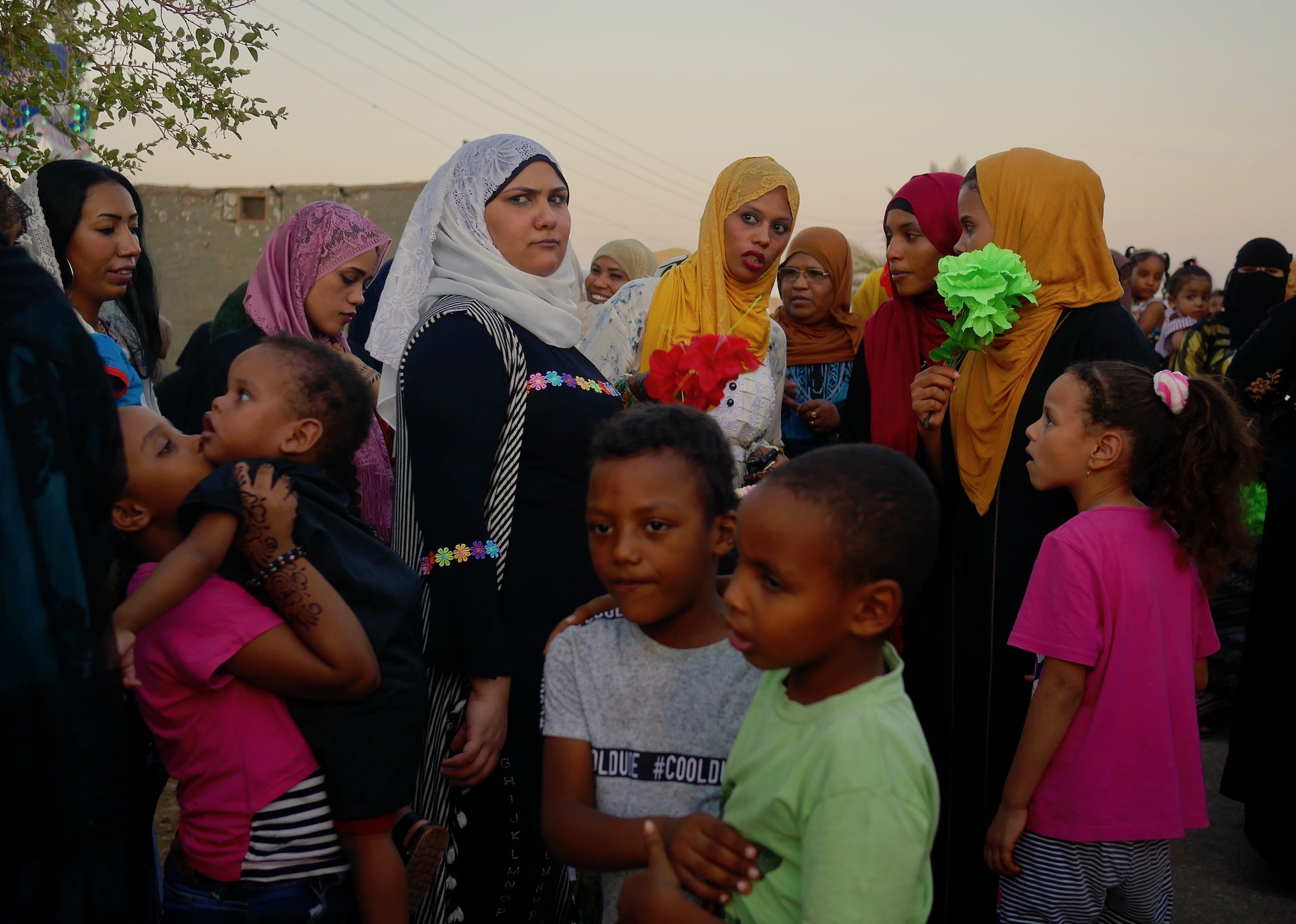
According to the Nubians, at the bottom of the Nile there are palaces inhabited by river people, sheikhs, angels or dogri (in Mattokki language, spoken by Kenzi/Kunuz people). River creatures – just like the river itself – can be very unpredictable. Some of them – for example Aman Doger, a black, hairy monster with vertical red eyes – are responsible for inducing depression, emotional disorders or madness. Others are involved in initiating Nubian fortunetellers and healers. To perform such a role in the community, a woman must experience an episode of abduction to the dark bottom of the river and there acquire knowledge inaccessible to mortals. In liminal moments of life, the Nubians give offerings to the spirits of the river to appease them or to ask for support, and knowledge about how to do this is usually communicated to women in dreams.
Female river spirits are called in Arabic banat el nil –Daughters of the Nile. They are friendly by nature and – if they do not drag anyone into the river – they serve the community with advice and healing. To benefit from their help, the Nubians contact women who can contact these beings. The communication takes place by means of private rituals, ablutions in the river and throwing gifts such as henna, incense and perfumes into the Nile waters. By cherishing this close relationship, some Nubian women gained a special clairvoyance and healing abilities. Rituals are performed in places where the Daughters of the Nile have been seen before. Women unable to get pregnant go there during the new moon to wash their body seven times in the waters of the river.
Usually, however, ceremonies on the banks of the river are associated with key moments of passage from one stage of life to another. Riverside rites linked to birth are performed in a particularly meticulous manner. According to John G. Kennedy, a participant in the aforementioned ethnographic research, a woman waiting for her first labour dressed in white, put on golden jewelery and emphasized her eyes with a strong line made with charcoal. Similar to an Ancient Egyptian deity, with hands and chin covered with henna, she immersed herself in the river to receive blessings for her baby from the Daughters of the Nile and to secure the protection of the spirits during the labour. In Nubian metaphysics, supernatural beings appreciate and reward the beauty of mortals. During the labour, a knife or a nail was hidden under the woman’s pillow, and dates and sorghum seeds (an invitation for supporting spirits) were put in the bowl next to her head. The mother spat on her newborn seven times with pieces of a fresh date so that the baby would grow beautiful, healthy and bestowed with a nice voice. After delivery, a young boy with a knife held in his upraised hands led a procession to the river. The knife’s blade, a symbol of masculinity, was to protect the newborn against besmego, hostile ghosts of the deserts and mountains. All good aspects of the difficult life of the Nubians have always been associated with the Nile rather than with the harsh and dry desert landscape. The procession ended by the river into which the placenta was thrown, with seven dates, perfumes and incense. On the way back, the cheerful procession carried green palm twigs and canisters with water taken from the Nile. Twigs were scattered on the floor of the father’s house and sprinkled with water to fill the house with life. The remaining water (forty canisters) was poured onto the mother to make the final ablution.
Nubian rites related to other moments of passage from one stage of life to another are more contaminated with Muslim religious customs. During festivals honouring Sufi saints, entire communities cleanse themselves collectively in the Nile, while during other holidays water brought from the river is poured on the ancestors’ graves. A similar blend of influences can be observed during the seven-day weddings, with pagan elements such as processions, full of dancing and singing. Materials illustrating this story were recorded in the Kom Ombo region, the aforementioned site of resettlement for the Nubians. The main stream of the Nile runs several kilometers west of the site, thus when people want to offer gifts to the river or do ablutions, they go to the irrigation canals dug in the 1960’s. In the light of the full moon, a group of women accompanied by male musicians gathered in front of the bride’s house. The young woman, entirely covered with henna, was greeted with loud ululations, and the colourful march was launched along the sand-covered lanes generating clouds of dust. Rhythms beaten vigorously on tar drums, call-response songs, shouts praising the virtues of the bride and members of her family – the enthusiastic procession was slowly approaching its goal. At the irrigation canal, everyone took a handful of prepared food from bowls carried by the older women on their heads and threw it into the water as an offering to spirits.
On the second day I participated in the procession leading the groom [to the river]. The man dressed in white was greeted as enthusiastically as the bride. A golden crescent was placed on his forehead. Gold – like blood – is a magnet attracting spirits. Gold exported from Ancient Egypt to the entire Middle East was extracted in the mines located in Nubia. It is quite likely that the same gold, recast many times, glimmered on the groom’s forehead at the Nubian wedding we witnessed. The spontaneous, cheerful mood of the procession was sweetened by floral fragrances sprayed generously from cans of air fresheners. Ibrahim – an experienced vocalist, storyteller and MC in one – raised cheerful cries praising the groom and his family, to which the crowd of enthusiastic children and women answered while waving artificial flowers.
Musa Bass Teebo!! Musa is magnificent!!
The groom was led to the wedding house with a small stop for the last ablution in the irrigation canal. The subsequent marriage ceremony was the culmination of a long week of rites, processions, events and numerous official announcements. All this period is saturated with dancing, singing and dynamic rhythms played on tar drums.
Nubian tribes express their distinctiveness, describing themselves as a cultural bridge between Egypt and Sudan. The Fadikka people inhabiting the Kom Ombo valley have been separated from their relatives living in Sudan by the five-hundred kilometers long Lake Nasser. As an effect of the resettlement, their community had to adapt to entirely new living conditions. They had to abandon their clay houses in small villages on the banks of the Nile and move to concrete blocks of flats in densely populated housing estates built by the government. Each of these housing estates is provisioned with a mosque, a post office, a football field and a national cable TV network. It has not been determined yet whether the culture of the Fadikka and Kunuz peoples resettled here is in decline or is just in the process of another transformation. Today, in Kom Ombo, offerings for the Daughters the Nile are thrown into irrigation canals, incense has been replaced by air fresheners during procession, dancing crowds wave plastic flowers purchased in a corner shop, and membranes in tar drums are plastic, not leather – and easier to tune. Undoubtedly, the Fadikka are slowly becoming citizens of the modern state and this is not just a matter of changing the aesthetics
Luka Kumor, January 2020.
Translated from Polish by Andrzej Wojtasik.
SOURCES
John G. Kennedy Mushahara: A Nubian Concept of Supernatural Danger and the Theory of Taboo, American Anthropologist, Volume 69, Issue 6, December 1967
John G. Kennedy Aman Doger: Nubian Monster of the Nile, The Journal of American Folklore Vol. 83, No. 330 pp. 438-445, 1970
Michael Muhammad Knight, Magic in Islam, New York: Tarcher Perigee, 2016
Magda Saleh, Dance in Egypt, The Garland Encyclopedia of World Music Volume 6, New York and London: Routledge, 2002
